Our rainy season is finally beginning to wind down, so I’ve been out and about with the ’Bird on a regular basis—just enough for little stuff to start bothering me.
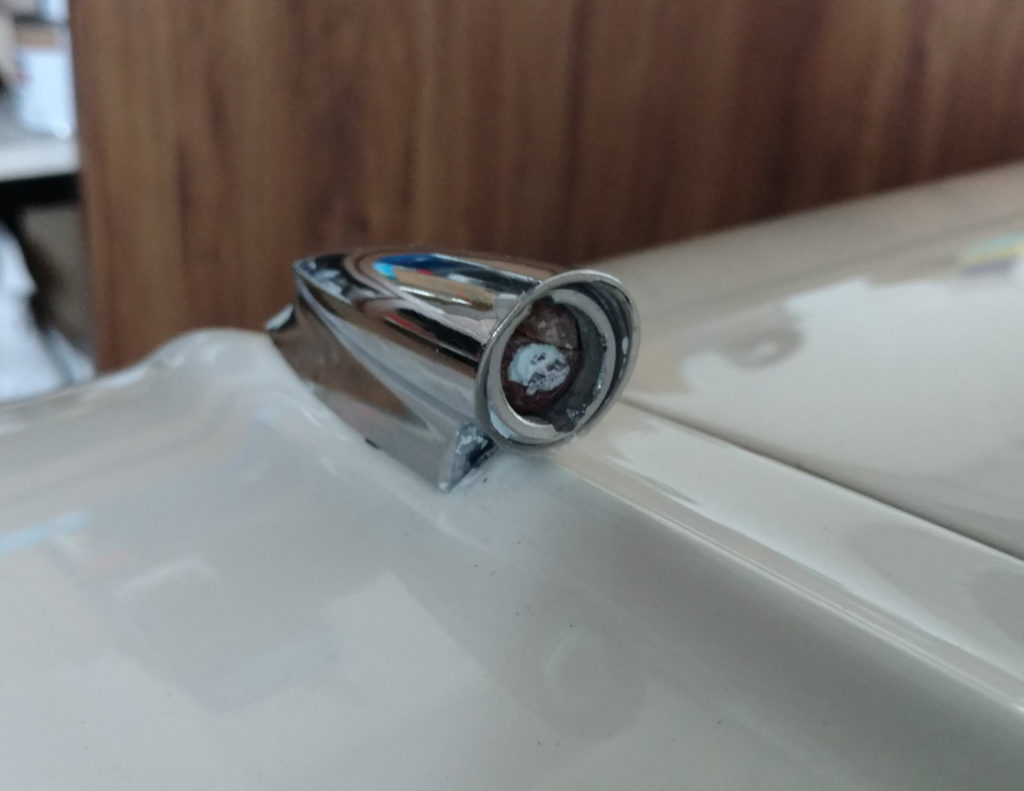
At the top of that list was the right turn fender indicator. It was working intermittently, but finally stopped altogether a month or two ago. I picked up a couple of good used units from eBay, stripped them for parts and learned a great deal about how they go together.
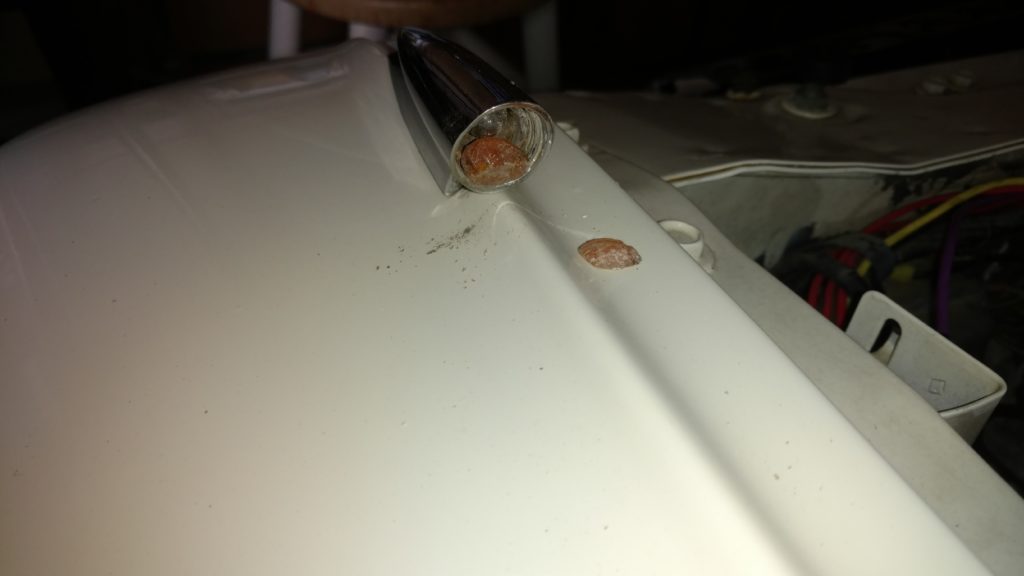
I made a tool from an old washer and used it to unscrew the bezel. Inside the bulb, socket, lens and gasket are all spring loaded. The spring is pretty strong, but I had to use a pick to scrape out dirt, corrosion and lens fragments to free everything up and allow the spring to work.
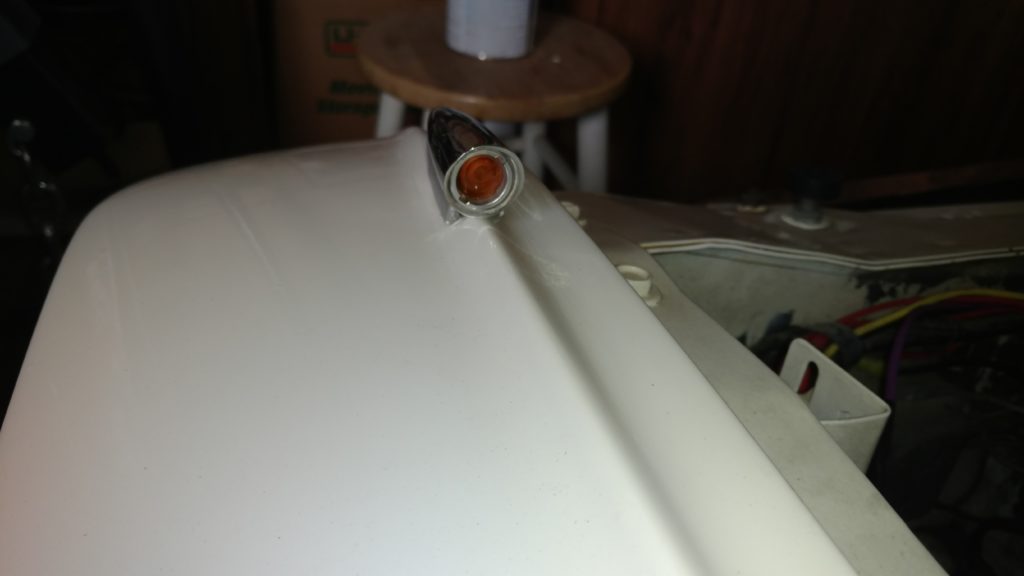
On the right, the bulb was still good (a surprise), but the corrosion apparently kept the unit from grounding properly. Once cleaned, functionality was restored.
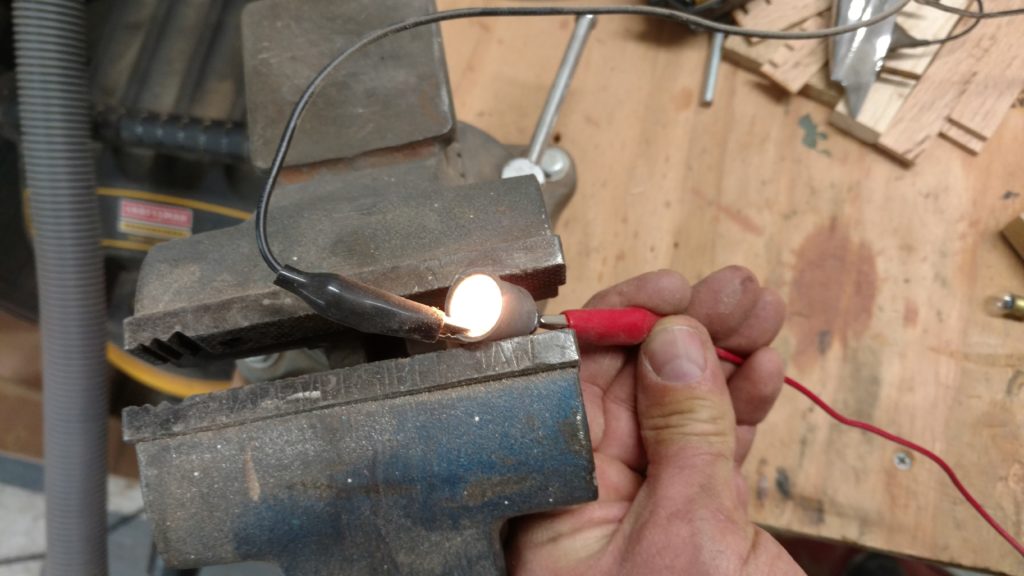
On the left side, I only had to replace the lens. The most difficult part of this job is getting the assembly back together against the pressure of the spring. I used a small stick to push the lens and socket into the housing, then did my best to get the threads on the bezel started by hand.
The small, fragile lenses have a small plastic tab meant to key into a slot in the housing. In a perfect world, the tab and key would keep the lens properly oriented. In my world, the tab was broken off one lens and barely registered on the other, so both lenses spun during assembly.
Still, I have bright, clean indicators now (and can stop driving around with the right indicator mindlessly blinking away).
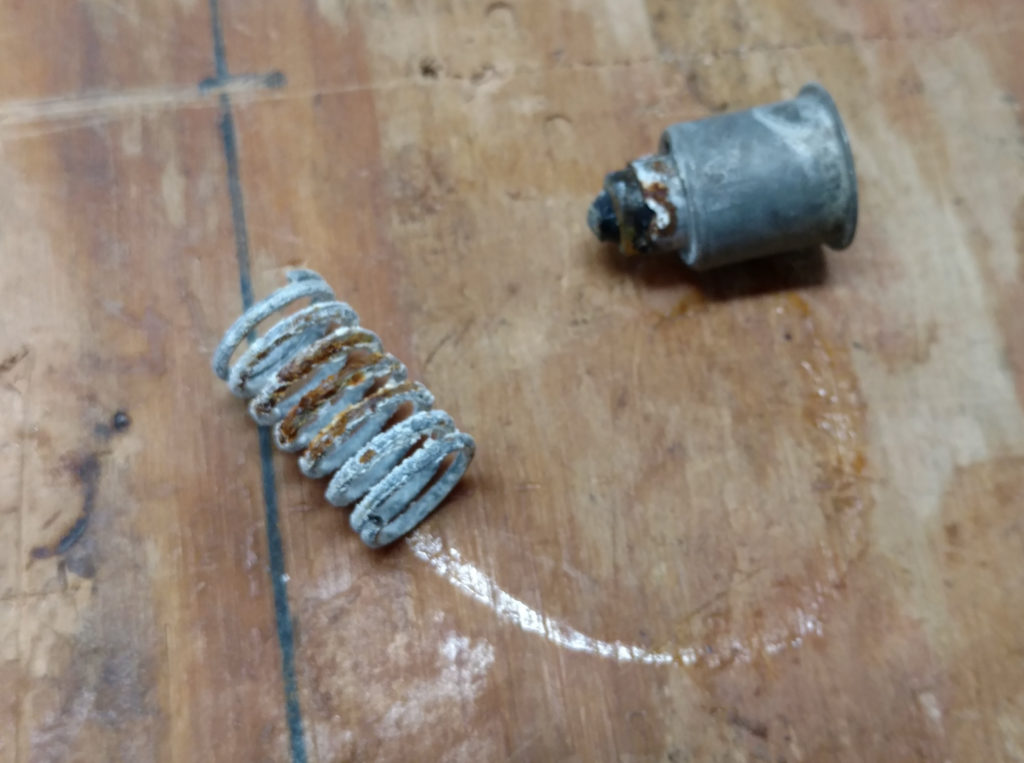
Under the hood, I noticed a while back that I had mis-routed the pressure hose from the power steering pump to the steering box. It should run outboard of the master cylinder, but it was on the wrong side. In that position, it can’t be clamped down securely without the hose rubbing on something.
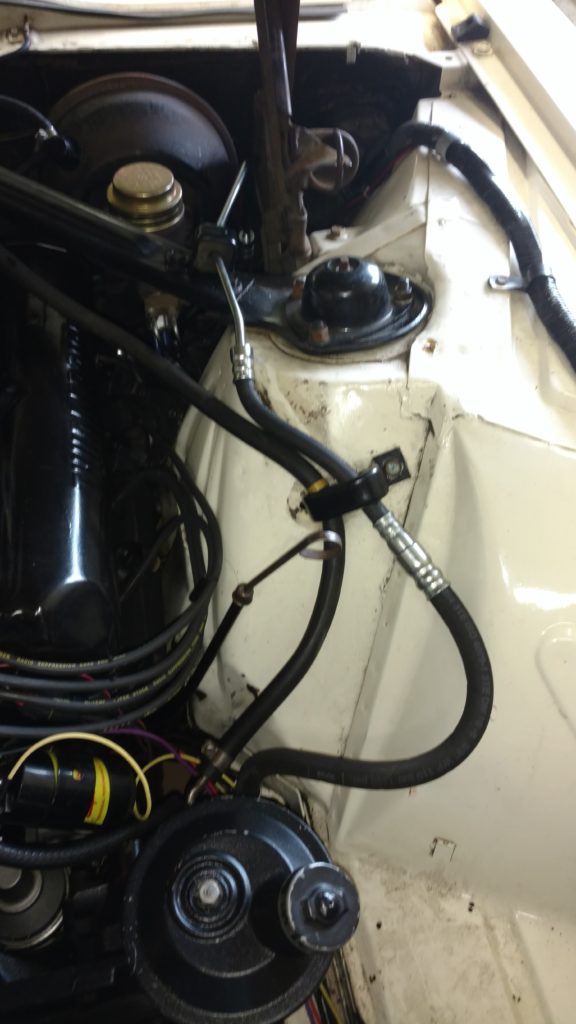
Getting to the fitting on the steering box is not easy, and it’s one of those operations where you have to move the nut, flip the wrench over, move it slightly again, flip the wrench…etcetera. Ug. I was there for a while, and when it was done, my lower back was acutely aware that I had dropped the front end of the car an extra inch.
I lost a little fluid in the process (messing up my pristine rebuilt steering box a bit), but once it was in place, I was finally able to secure the hose to the brace and inner fender—the final, final step to the engine removal and refresh project.
Lastly, I replaced a missing snap ring on the kickdown linkage. Fun fact: if the kickdown linkage comes apart at speed, it can jam the throttle open. Go check yours right now.
